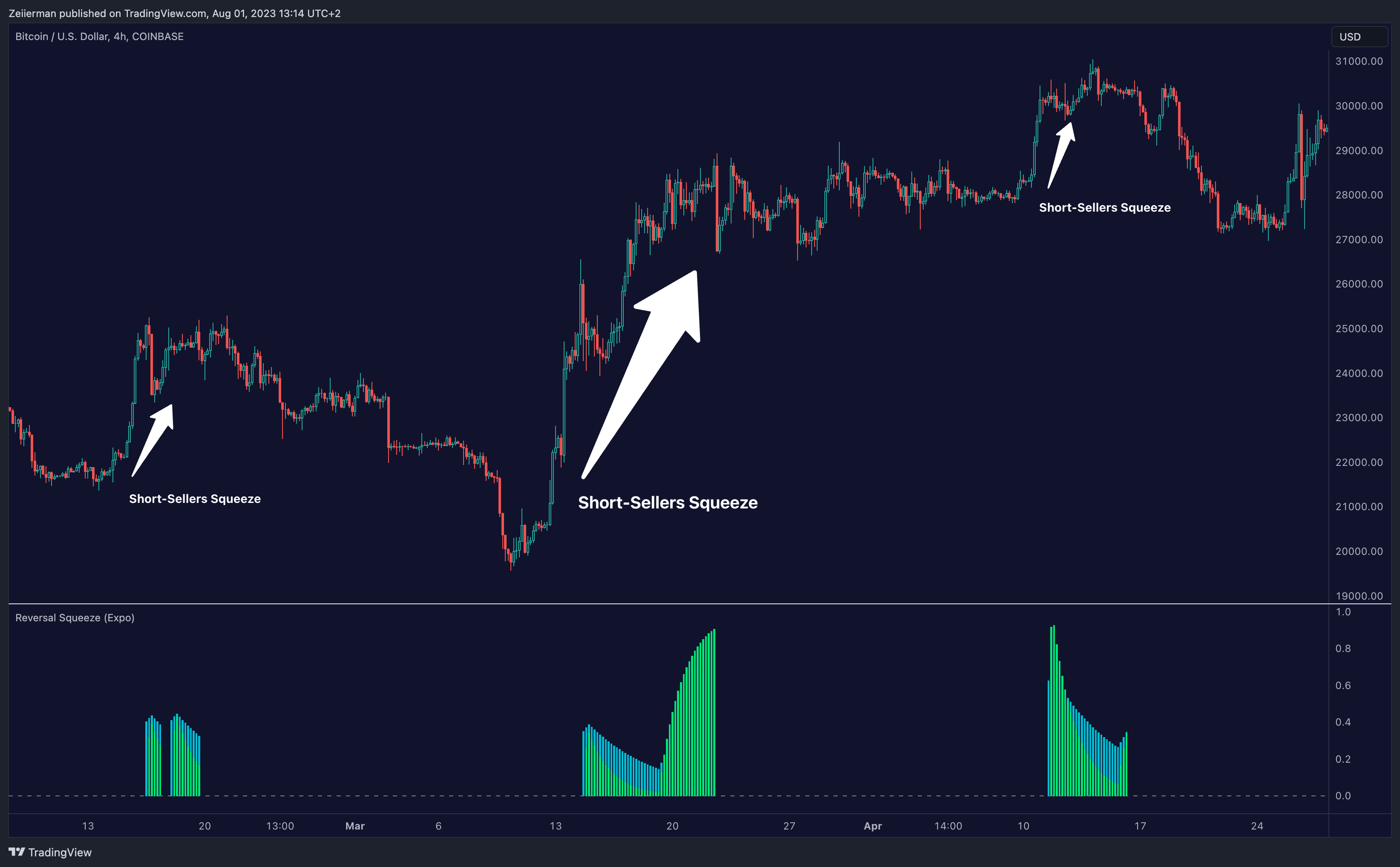Reversal Squeeze
Quick Links
Categories
The Reverse Squeeze indicator aims to identify situations where market participants (either short-sellers or long buyers) are under significant pressure due to unexpected price movements, which may lead to forced actions to mitigate their losses. These pressured situations, often termed as ‘squeezes,’ can lead to overreactions in the market that could subsequently result in price corrections or reversals.

What is a squeeze?
A squeeze occurs when a significant change in price forces market participants to take drastic action to mitigate their losses. There are two types of squeezes: short squeezes and long squeezes.
Short-Sellers Squeeze: This occurs when a stock’s price unexpectedly rises, pressurizing short-sellers who had bet on the stock price going down. The increased price forces these short-sellers to buy back the stocks they had borrowed and sold (to close their positions), which can create even more demand for the stock, further driving the price up. This situation is often referred to as a “short squeeze.”

Long Buyers Squeeze: This is the opposite situation, occurring when a stock’s price unexpectedly falls, putting long buyers under pressure. These buyers had hoped for a price increase. The decline forces these long buyers to sell off their holdings to minimize further losses, adding more supply to the market, which can push the price down even further. This situation is like a “long squeeze.”

The Reverse Squeeze indicator identifies these situations, assuming that the short-sellers or long buyers’ forced actions will lead to overreactions in the market, resulting in a correction or a reversal. As a trader, you might use the Reverse Squeeze indicator to identify these potential overreactions and trade on the anticipated correction or reversal.
How are squeezes calculated?
Calculating a squeeze involves multiple factors, primarily revolving around price movements, trading volumes, and market sentiment. While the actual positions, like the number of shorted shares or long positions, provide direct insights, there are several other indicators that traders can use to estimate potential squeezes, especially when direct data isn’t readily available.
- Price Action: This is an essential aspect of calculating potential squeezes. Rapid and significant increases or decreases in a stock’s price can hint at potential short and long squeezes, respectively. Traders monitor these drastic price movements to anticipate possible squeezes.
- Volume: Volume, or the number of shares traded within a specific period, is another crucial factor. High trading volumes usually accompany squeezes. A sudden spike in volume along with a rapid price increase can indicate a short squeeze, while a rapid volume increase along with a quick price decrease could signal a long squeeze.
- Volatility: Increased volatility is often associated with squeezes. A rapid increase in volatility might suggest that a squeeze is happening or about to happen.
How to use the Reversal Squeeze Indicator
The Reverse Squeeze indicator can be a valuable tool in a trader’s arsenal. It has the potential to give traders an ‘alpha,’ or an edge over other market participants, for the following reasons:
Detection of Overreactions: The indicator helps to identify market overreactions, where stocks become overbought or oversold due to forced buying or selling. These overreactions often lead to price corrections or reversals, providing potential trading opportunities.

Anticipating Price Reversals: By identifying instances where short sellers or long buyers are “squeezed” and might need to take drastic action, the indicator can help traders anticipate potential overreactions in the market that might lead to price corrections or reversals.

Risk Management: By identifying potential squeezes, traders can manage their risk more effectively. They can avoid going short on a stock if a short squeeze seems likely or avoid going long if a long squeeze is anticipated.
Why is the Reversal squeeze indicator Needed?
The Reverse Squeeze Indicator can provide crucial insights into market dynamics that may not be apparent with other indicators. It allows traders to spot potential trading opportunities arising from market overreactions. Moreover, by identifying potential squeezes, traders can manage their risk more effectively, avoiding positions that might put them on the wrong side of a squeeze.
Here’s how institutions might influence market conditions that can lead to a squeeze:
Institutions can actually contribute to creating squeezes because of their size. For instance, an institution that starts covering a large short position can trigger a short squeeze.

Conversely, an institution that begins to sell a large long position can trigger a long squeeze.

Or if an institution or a group of institutions decide to buy a large number of shares in a company that has a significant number of short positions, this increased demand can cause the stock price to rise. This upward movement can put pressure on short-sellers to cover their positions, further increasing demand and driving the price even higher, creating a short squeeze.
- These activities are part of the market dynamics where larger players naturally have more influence. However, it’s crucial to note that deliberately creating conditions to cause harm to other market participants can cross into market manipulation, which is illegal. So while it’s theoretically possible for institutions to “squeeze” the market, it’s generally not their primary strategy due to the legal, ethical, and reputation risks associated. They are, however, very adept at recognizing and capitalizing on these situations when they arise naturally in the course of market dynamics.
The content on Zeiierman Trading is for informational and entertainment purposes, based on personal experience. It is not a substitute for financial advice. Always consult a qualified professional for financial investment guidance. For more details, please read our disclaimer and policies.
Subscribe to our membership






